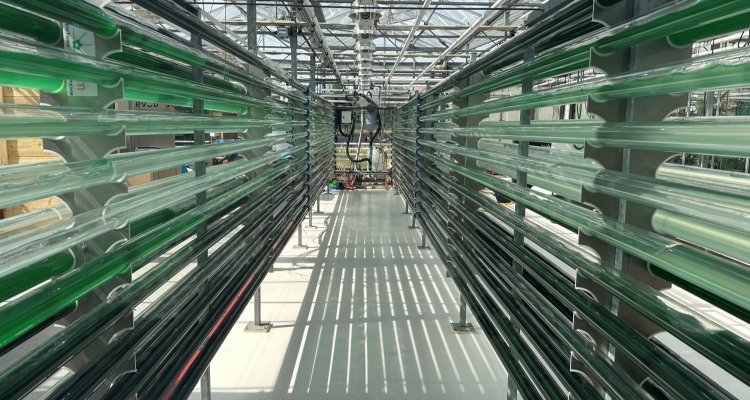
Project
Monitoring and control of microalgae cultures
Monitoring and control of microalgae production systems at large-scale is still a challenge because of the complex nature of the process. This project aims to contribute through the development of models, methods, and control strategies for automated cultivation.
Background
The feasibility of large-scale microalgae cultivation strongly depends on the choice of production parameters and culture variables, such as temperature, light, pH, nutrients, dissolved oxygen, and dissolved carbon dioxide. In tubular photobioreactors, operative parameters like the residence time in the tubes or the gas flowrate and composition are also very important for optimization.
Since deviations from the optimal operative conditions could strongly affect the performance of the culture, reliable monitoring strategies and robust control systems are needed to achieve good results. Control systems are useful when the monitored variable is subjected to disturbances or must be set to a specific value. For example, the pH of the culture could be monitored and kept around a stable optimal value, by manipulating the carbon dioxide supply to the reactor with an automated strategy. However, it is not possible to control all the variables that affect the culture and some compromises have to be made. Temperature can be controlled only if heating or cooling devices are employed, and in this case, the optimization might not be worth the additional costs and energy expenses. Furthermore, control of the light intensity affecting an outdoor or greenhouse production system is difficult because it depends on the daily sunlight variations. However, the light input in the culture can be indirectly controlled by changing the biomass concentration throughout the day.
In order to control the light input to the culture, a reliable monitoring strategy has to become available. In addition, accurate monitoring of the growth rate and photosynthetic efficiency is crucial in order to make informed decisions regarding the optimization of the cultivation process. Light measurements at the surface of the photobioreactor are generally employed to estimate light input to the reactor. However, these measurements could be difficult to perform in certain designs like tubular ones, or many light sensors might be required.
Furthermore, it is important to predict changes in the tubes that cannot be easily measured, but could strongly affect the culture. In fact, microalgal metabolism will lead to carbon dioxide consumption and oxygen production across the tubes. As a result, carbon dioxide limitation or oxygen inhibition could happen, leading a to decrease in productivity. It is possible to employ models to design tubular photobioreactors or to verify if a certain species is suitable for the specific photobioreactor, but they can also be used as a tool to investigate control strategies, and to design control systems.
Project description
This project aims to improve the understanding of large-scale tubular photobioreactors by developing advanced models. The modeling information will be useful for employing monitoring and control strategies, to better optimize the process.
We will develop and validate a model for a two-phase tubular photobioreactor to study the effect of the change of process parameters on the culture. In addition, we will employ off-gas analysis as a monitoring strategy for large-scale reactors and the design and testing of new control strategies. Lastly, we will establish a new method to measure solar light input in a tubular photobioreactor by evaluating heat fluxes and thermal gradients.